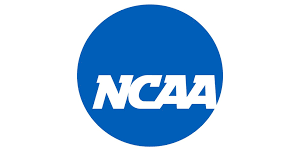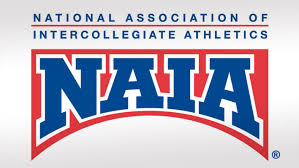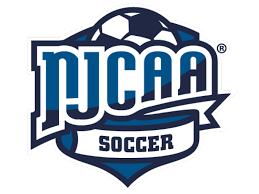






Comparison of Different College Soccer Levels
To maximize your opportunity to play soccer in college, research and keep an open mind about finding the right level of college soccer that fits your needs as a student athlete.
- NCAA Division I
- NCAA Division II
- NCAA DIvision III
- NAIA
- Junior College
 Seize the Spotlight at NCAA Division I Colleges
Seize the Spotlight at NCAA Division I Colleges
For student-athletes who are looking to compete at the highest level-and have the skills to back it up-an NCAA Division I soccer program is probably the best choice. Athletes who compete at NCAA DI soccer colleges were usually the best players on their high school and club teams and are passionate about their sport. DI soccer colleges push their athletes to really focus on the sport, offering little time for extracurricular activities outside of schoolwork.
How many Division I soccer teams are there?
Currently, there are 333 NCAA DI women's soccer colleges and 205 NCAA D1 men’s soccer colleges across the country. DI soccer colleges offer scholarships but bear in mind that not all programs are fully funded. It's crucial to develop a relationship with the coach to learn more about how each particular program handles scholarship opportunities.
NCAA Division II Colleges: Balance Athletics and Academics
NCAA DII soccer colleges feature talented teams with high-level soccer players. At many top-tier DII soccer colleges, it’s common to see DI-level athletes. However, DII soccer colleges tend to have a slightly less demanding schedule than DI teams, giving athletes a little more time for a life outside of their sport. For talented athletes who want some time to explore other interests in the offseason, a DII program can offer a great fit.
How many Division II soccer teams are there?
Currently, there are about 265 NCAA DII soccer colleges with women’s teams and 214 NCAA DIV II soccer colleges across the country. DII soccer colleges offer athletic scholarships but there are fewer to go around than at the DI level. It’s crucial to develop a relationship with the coach to learn more about how each particular program handles scholarship opportunities.
NCAA Division III Soccer Colleges: A Well-Rounded College Experience
Student-athletes looking for an opportunity to push themselves athletically and academically might find the right fit at an NCAA DIII soccer college. Many DIII soccer schools are known for their academic rigor, but schools at this level also field some talented soccer programs. NCAA DIII soccer players usually have more flexibility than DI or DII athletes to explore interests and activities outside of their sport, similarly to NAIA soccer schools. The recruiting process is also much less rigid than DI or DII schools, so coaches have more freedom in when and how they can reach out to recruits. With 441 NCAA DIII women’s soccer colleges and 415 NCAA DIII men's soccer colleges across the U.S., there are great opportunities for incoming freshmen recruits looking to play in college.
Do NCAA Division III schools give out athletic scholarships?
No, NCAA DIII soccer schools generally do not offer athletic scholarships, though that should not deter potential recruits. DIII soccer colleges provide student-athletes with the opportunity to receive merit, need-based or academic scholarships. In fact, most DIII students are on some kind of financial aid and DIII soccer programs can be very helpful in finding scholarship money for athletes. Make sure to research opportunities and don’t discount a DIII school.
 NAIA Soccer Colleges: A College Experience That Fits Many Needs
NAIA Soccer Colleges: A College Experience That Fits Many Needs
The NAIA, or National Association of Intercollegiate Athletics, sets the athletic rules for its 300+ member colleges and its 188 women's and men's soccer programs. The NAIA is characterized by its smaller, close-knit campuses, competitive teams and well-rounded college experience for athletes. For student-athletes who want to study abroad, participate in extracurricular activities and enjoy a more traditional college experience, the NAIA might be a great fit.
Are there NAIA soccer scholarships?
There are NAIA soccer scholarships available for athletes. The amount of money athletes can receive as part of their NAIA soccer scholarship will depend on the school, coach, talent level and position. A fully funded NAIA soccer program can give out 12 scholarships, compared to the 9.9 scholarships that can be offered by a full funded NCAA DII program. NAIA schools also have other financial aid opportunities outside of athletic scholarships. Potential recruits should look into academic, merit and need-based scholarships to bring down the overall cost of tuition.
 Junior Colleges with Soccer: Develop Your Skills and Academics
Junior Colleges with Soccer: Develop Your Skills and Academics
Junior colleges are two-year universities that give student-athletes an opportunity to develop their athletic and academic skills in a post-high school program. There are about 181 NJCAA soccer colleges with women’s programsand 217 NJCAA soccer colleges with men's programs out there, so there are many opportunities for athletes to develop their skills and boost their academics. In fact, many junior college soccer teams have future NCAA DI and DII athletes on their roster who are there to hone their skills before they commit to a four-year school. For athletes who might not have the grades, finances or build for a four-year school, a junior college soccer program can be a great way to gain experience competing against collegiate athletes.
Are NJCAA soccer scholarships available?
Yes, junior colleges can—and do—offer scholarships for qualified athletes. Depending on the school and how funded the program is, qualified athletes might receive a partial or full-ride scholarship. In fact, junior college soccer programs can give out up to 18 scholarships per team.

